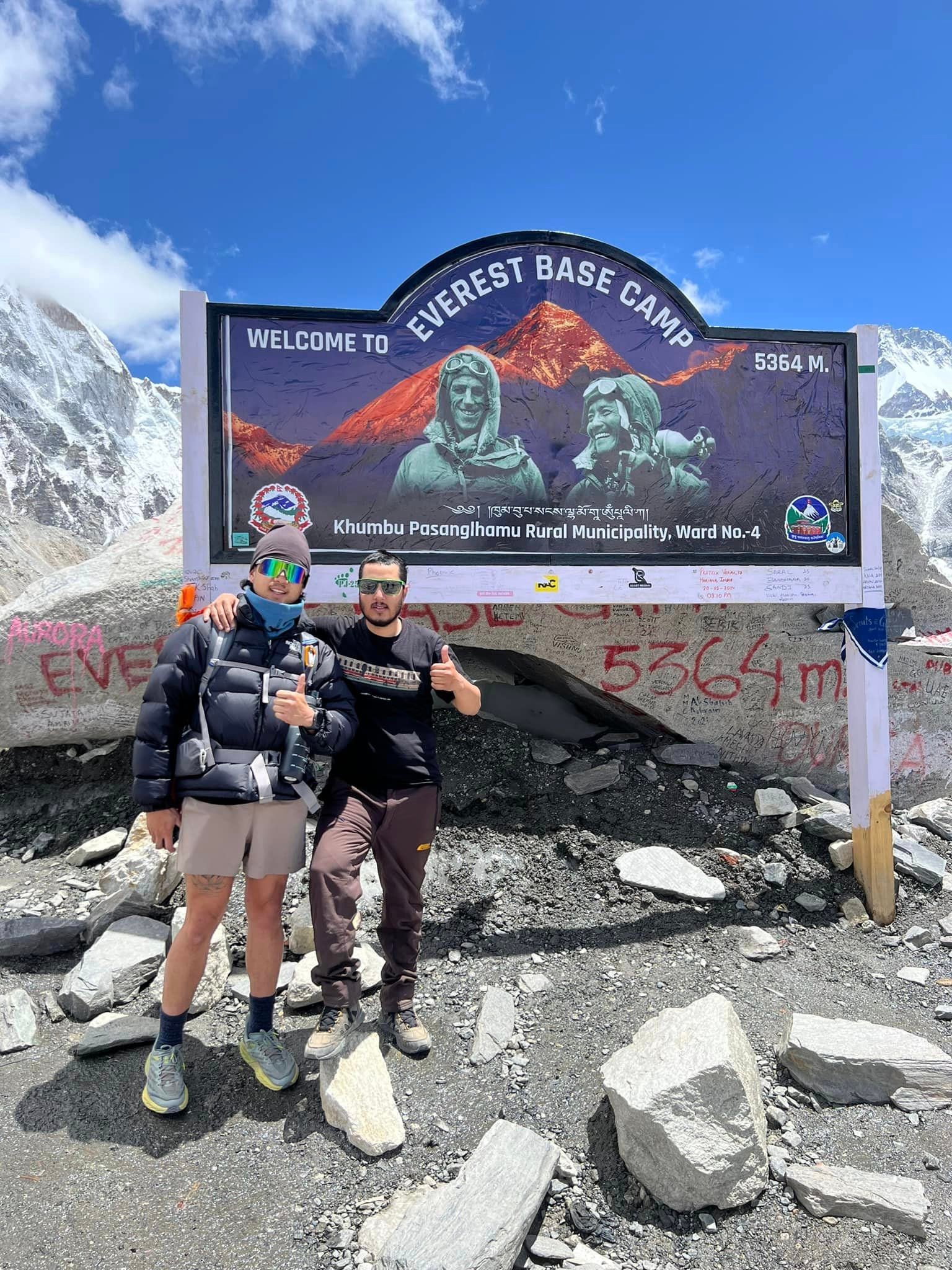🗓️ 1. Choose the Best Time to Trek
The optimal trekking seasons are March to May and October to November, offering clear skies and favorable weather conditions. These periods provide the best visibility of the majestic Himalayan peaks.
🧭 2. Select a Trekking Route
The classic EBC trek typically spans 12 to 14 days, starting with a flight from Kathmandu to Lukla, followed by a trek through villages like Namche Bazaar, Tengboche, Dingboche, and Gorak Shep, culminating at Everest Base Camp (5,364 meters). Some itineraries include a hike to Kala Patthar (5,545 meters) for panoramic views of Everest.
🏢 3. Choose a Reputable Trekking Agency
Opting for a licensed trekking agency ensures safety and convenience. Agencies handle logistics such as permits, accommodations, guides, and porters. Ensure the agency provides insurance for staff and follows ethical practices.
💰 4. Understand the Costs
The cost for an EBC trek varies based on services and duration:
-
Standard Packages: Range from $1,200 to $2,500, covering permits, domestic flights, accommodations, meals, guides, and porters.
-
Luxury Packages: Can exceed $3,000, offering enhanced accommodations and services.
-
Additional Expenses: Include international flights, travel insurance, visa fees, equipment rentals, and personal expenses.
📝 5. Obtain Necessary Permits
Trekkers need the following permits:
-
Sagarmatha National Park Entry Permit: Required for entering the national park.
-
Khumbu Pasang Lhamu Rural Municipality Permit: Mandatory for the Khumbu region.
Most trekking agencies arrange these permits on your behalf.
🧳 6. Prepare and Pack Appropriately
Essential items include:
-
Clothing: Layered clothing suitable for varying temperatures, including thermal wear, a down jacket, and waterproof gear.
-
Footwear: Sturdy, broken-in hiking boots with good ankle support.
-
Accessories: Sunglasses, gloves, hats, and trekking poles.
-
Equipment: Sleeping bag, headlamp, water purification tablets, and a first aid kit.
Some agencies offer equipment rentals or include them in their packages.
🏃 7. Train for the Trek
Physical preparation is crucial. Focus on:
-
Cardiovascular Fitness: Engage in activities like hiking, running, or cycling.
-
Strength Training: Build leg and core strength.
-
Endurance: Practice long-distance walks with a loaded backpack.
Training helps in acclimatization and reduces the risk of altitude sickness.
🛫 8. Book Flights
-
International Flight: Fly into Tribhuvan International Airport in Kathmandu.
-
Domestic Flight: From Kathmandu, take a 30-minute flight to Lukla, the gateway to the EBC trek. Note that flights to Lukla are weather-dependent and may experience delays.
🏨 9. Accommodations
Along the trail, teahouses provide basic lodging and meals. These are simple guesthouses run by local families, offering an opportunity to experience Sherpa hospitality. In Kathmandu, a range of accommodations is available, from budget hostels to luxury hotels.
🧘 10. Acclimatization and Health
To prevent Acute Mountain Sickness (AMS):Ascend Gradually: Follow the itinerary with scheduled acclimatization days.
-
Stay Hydrated: Drink plenty of fluids.
-
Recognize Symptoms: Be aware of AMS signs like headaches, nausea, and dizziness.
Consult with your doctor before the trip and consider carrying medications like Diamox.
🌐 11. Book Your Trek
Once you’ve selected an agency and finalized your plans:
-
Confirm Dates: Ensure availability for your preferred trekking window.
-
Make a Deposit: Most agencies require a deposit to secure your booking.
-
Review Terms: Understand the cancellation and refund policies.
Booking in advance is recommended, especially during peak seasons.











